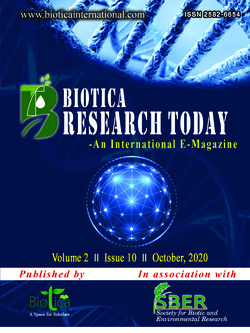
Millets for Sustainable Agriculture and Nutritional Security
Vivek Chandra Verma*
Defence Institute of High Altitude Research (DIHAR) - Defence Research & Development Organisation (DRDO), Ram Darbar, Chandigarh (160 002), India
Somen Acharya
Defence Institute of High Altitude Research (DIHAR) - Defence Research & Development Organisation (DRDO), Ram Darbar, Chandigarh (160 002), India
B.C. Verma
Central Rainfed Upland Rice Research Station, ICAR-NRRI, Hazaribagh, Jharkhand (825 302), India
DOI: NIL
Keywords: Millet, Nutritional composition, Neutraceuticals, Value added products
Abstract
Increasing population creates a pressure to meet the quality food, and presents a challenge to explore the feasible options to get the potential food sources to meet the increasing food demand. Underutilized crops like millet are the prominent options to meet the food demand as well as to reduce malnutrition. Improved processing and utilization techniques will give out more value added products of wide acceptance in rural as well as urban areas. Thus, it may be important food crop worldwide with a markable impact on economy as well as health. Millets have variety of desired characteristic such as drought and pestresistance, rich in nutrients and minerals helps in abolishing malnutrition, potential prebiotic and probiotics which have several health advantages etc. It must be considered as potential food to meet the future demand in terms of quality as well as quantity.
Downloads
not found
Reference
Bora, P., Ragaee, S., & Marcone, M., 2019. Characterisation of several types of millets as functional food ingredients. International journal of food sciences and nutrition, 70(6), 714-724.
Kumar, A., Tomer, V., Kaur, A., Kumar, V., & Gupta, K., 2018. Millets: a solution to agrarian and nutritional challenges. Agriculture & food security, 7(1), 31.
Nithiyanantham, S., Kalaiselvi, P., Mahomoodally, M. F., Zengin, G., Abirami, A., & Srinivasan, G., 2019. Nutritional and functional roles of millets-A review. Journal of food biochemistry, 43(7), 1-10.
